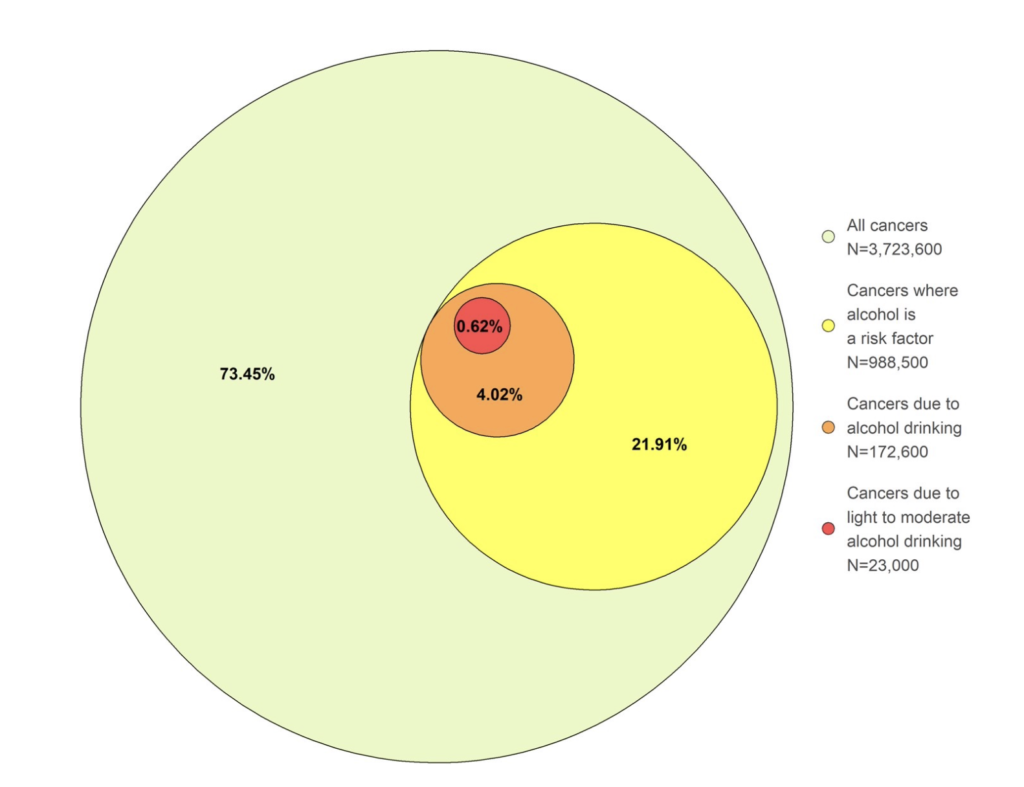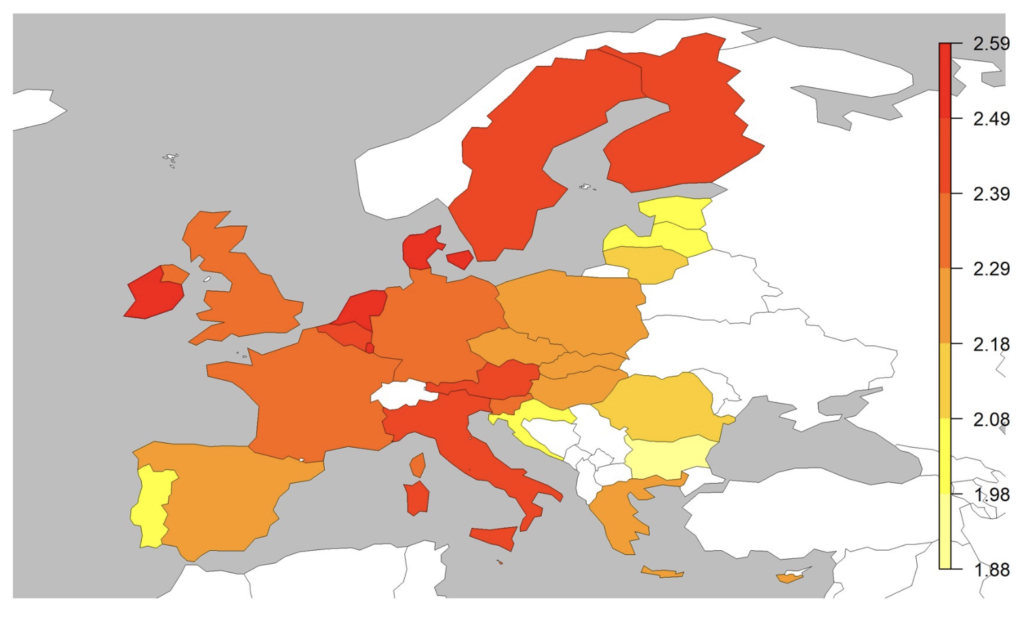Estimation of cancers caused by light to moderate alcohol consumption in the European Union
Research article
Abstract
Background
Research has identified alcohol to be an important risk factor for several types of cancers. This study estimates the number of incident cancers attributable to alcohol consumption in the European Union (EU) in 2017, with a special focus on those caused by low-dose alcohol consumption levels.
Methods
The attributable-fraction methodology is used to estimate the number of new cancer cases in the year 2017 in the EU caused by alcohol use, and further examines those due to low-dose alcohol use levels, defined here as alcohol consumption of <20 g of pure alcohol per day.
Results
Low-dose alcohol consumption levels caused almost 23,000 new cancer cases in the EU in 2017, and accounted for 13.3% of all alcohol-attributable cancers, and 2.3% of all cases of the seven alcohol-related cancer types.
Almost half of these (∼11,000 cases) were female breast cancers.
Also, more than a third of the cancer cases due to low-dose alcohol use resulted from a level of <1 standard drink per day (total: 37%; women: 40%; men: 32%).
Conclusions
Alcohol use, including low-dose alcohol consumption, continues to cause considerable cancer burden, and efforts should be made to reduce this burden.
In addition to the alcohol control policies suggested by the World Health Organization, public information campaigns and the placement of warning labels on alcohol containers advising of the cancer risk associated with alcohol use should be initiated to increase knowledge about the alcohol-cancer link.
Two illustrations
Conclusions for public health interventions
Low-dose alcohol use was identified as the cause of nearly 23,000 new cancers in Europe in 2017, confirming the fact that alcohol use at all levels is associated with cancer to a degree that it is of public health relevance. As both alcohol consumption and cancer incidence are relatively stable in the EU, the number of alcohol-attributable cancers will remain at similar levels if no interventions aimed at changing either of these numbers are put into place.
Given the current situation – that the link between alcohol use and cancer is NOT common knowledge to the public – better dissemination of such knowledge is necessary. One method would involve adding warning labels to alcoholic beverages stating that ‘alcohol can cause cancer’.
In addition, given that all levels of alcohol use are causally linked to cancer incidence, with effect sizes, which are of public health relevance, alcohol control policy measures directed at the whole population should be undertaken. Among such policies are the three ‘best buys’, alcohol policy measures identified by the WHO as being the most effective and cost-effective for governments to put in place. These measures include increasing the price and thereby reducing the affordability of alcoholic beverages via tax hikes, decreasing the availability of alcoholic beverages, and banning the advertisement and marketing of them.
The implementation of such policies would not only lead to reductions in alcohol consumption and cancer incidence but would also serve to reduce alcohol-attributable mortality and burden of disease overall.


